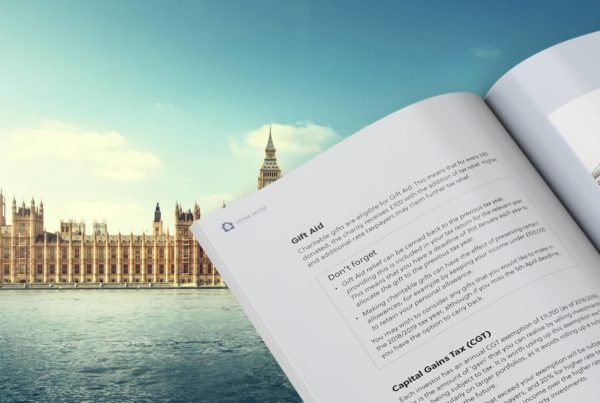PDF guides can be a fantastic tool for financial planners wanting to engage their clients and prospects.
Not only can you design them to perfectly reflect your financial brand, but their downloadable format allows them to be used in a wide range of marketing contexts – from landing pages to email campaigns.
At Clients+, we specialise in high-quality PDF guides for financial planners. Below, you’ll find 4 ideas on how to use these kinds of assets effectively in your marketing (both internal and external).
We hope this is helpful to you. To browse our range of PDF guides, please check out our content library here.
#1 Email campaigns
There are many ways that PDF guides can be used in a financial planner’s email marketing.
One idea is to use it as a newsletter. Some clients prefer to receive a monthly/quarterly publication from their financial planner in PDF format (instead of, say, an e-newsletter or printed edition).
This allows them to download it to their phone upon receipt, for example, and read it later when they have time. However, you will need to research your clients (and email list) first to determine if this approach is best for your audience.
A more common, effective approach is to offer a PDF guide to a client who has a question that needs addressing.
For instance, suppose your client reaches out to you with a question about active investing (versus passive/index investing). In this case, you could spend a long time typing out a response. Or, you could offer a branded PDF guide addressing that very question.
Not only does this save time, but it can show the client that your business is a professional outfit which has thought ahead regarding clients’ questions. By investing in PDF resources like these ahead of time, you show that you value your clients.
#2 Your core website
What kind of content do visitors encounter when they arrive on your financial website?
Unfortunately, many financial planners do not offer their visitors a lot of value. Perhaps there is some information about the company, the team and services – but not much else. Here, you have the opportunity to stand out from the competition.
By offering excellent thought leadership such as compelling articles, videos and downloadable PDF guides, you offer attractive and useful material for your prospects to consume and engage with. This drives traffic through your site and increases dwell time.
With financial planning guides on your core website pages, moreover, you increase your chances of visitors “bookmarking” your website (so they come back to it later). They might also download your PDF to their device – allowing your content to travel around with them.
#3 Landing pages
When you run an SEO campaign or a digital advertising (PPC) campaign, what kind of “lead magnets” are you offering people?
A lead magnet is typically a resource – like a PDF guide – which users can receive in exchange for some kind of meaningful “conversion action” (e.g. signing up to your newsletter, or to an upcoming webinar).
For instance, suppose you are running a Google Ads campaign on the Display Network. Here, your graphic-based ads show on other websites (e.g. in the sidebar) and show your audience something of value that they want, such as a PDF guide on ethical investing.
After the user clicks on your ad, they arrive on your landing page. This is a page dedicated to the topic at hand and might include a relevant PDF guide on the very subject. In your contact form, you could offer them the guide for free – with a call to action (CTA) to sign up to your upcoming webinar on ethical investing.
This is a “lead magnet” in action; a financial planning PDF guide used to drive action (in this case, webinar sign-ups).
#4 Social media
Certain social platforms are less PDF-friendly than others. Yet many allow you to upload them into a post.
In some cases, it may be better to provide a link to an online “flipbook” version of your PDF guide to your followers. This can provide a great user experience as the reader “turns” the pages with their mouse.
Of course, it is important to remember that social media algorithms have changed a lot in recent years. Gone are the days when you could post from your business page on Facebook, for instance, and expect it to appear in lots of users’ news feeds.
To gain more exposure in 2022, you need to consider investing in social media ads (e.g. Facebook Ads and LinkedIn Ads). These allow you to “boost” your post – e.g. one containing a link to your PDF financial planning guide – so that more of your audience sees it.
These channels can work quite well, with the right strategy. However, be careful to outline a clear plan and set of goals for any social media ad campaign you run, to give it the best chance of success. Keep a close eye on your budget too – making sure it does not run over.
Final thoughts
PDF guides, as you can see, are quite versatile and can be used by financial planners in many different marketing tactics and strategies.
However, it is important to make sure you invest in high-quality design for your guide(s). It is important to make a good impression and to ensure consistency with your brand. Also, the content inside needs to be truly helpful and excellent.
There are ways to make your own PFD guides. However, there are great benefits to investing in professional financial planning guides which do the job well. At Clients+, you can check out our content library by creating a free account, here.






